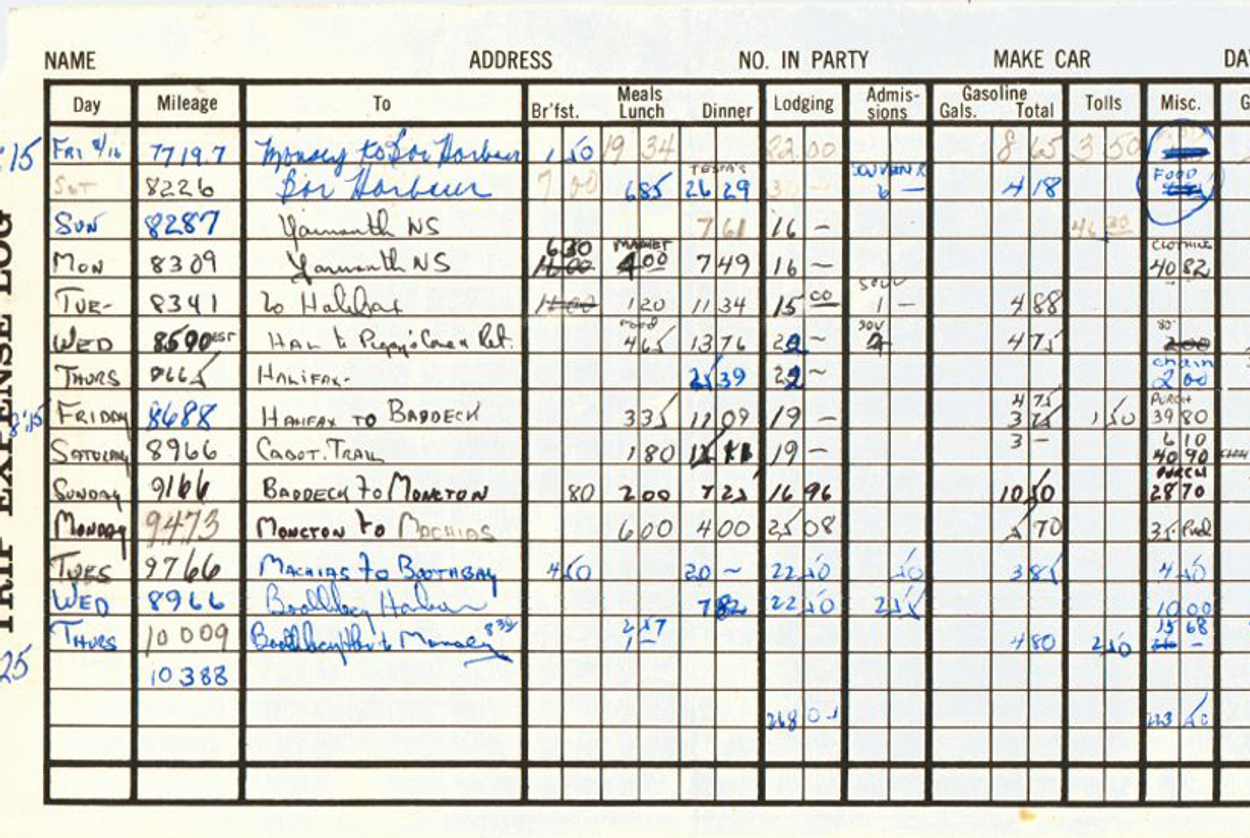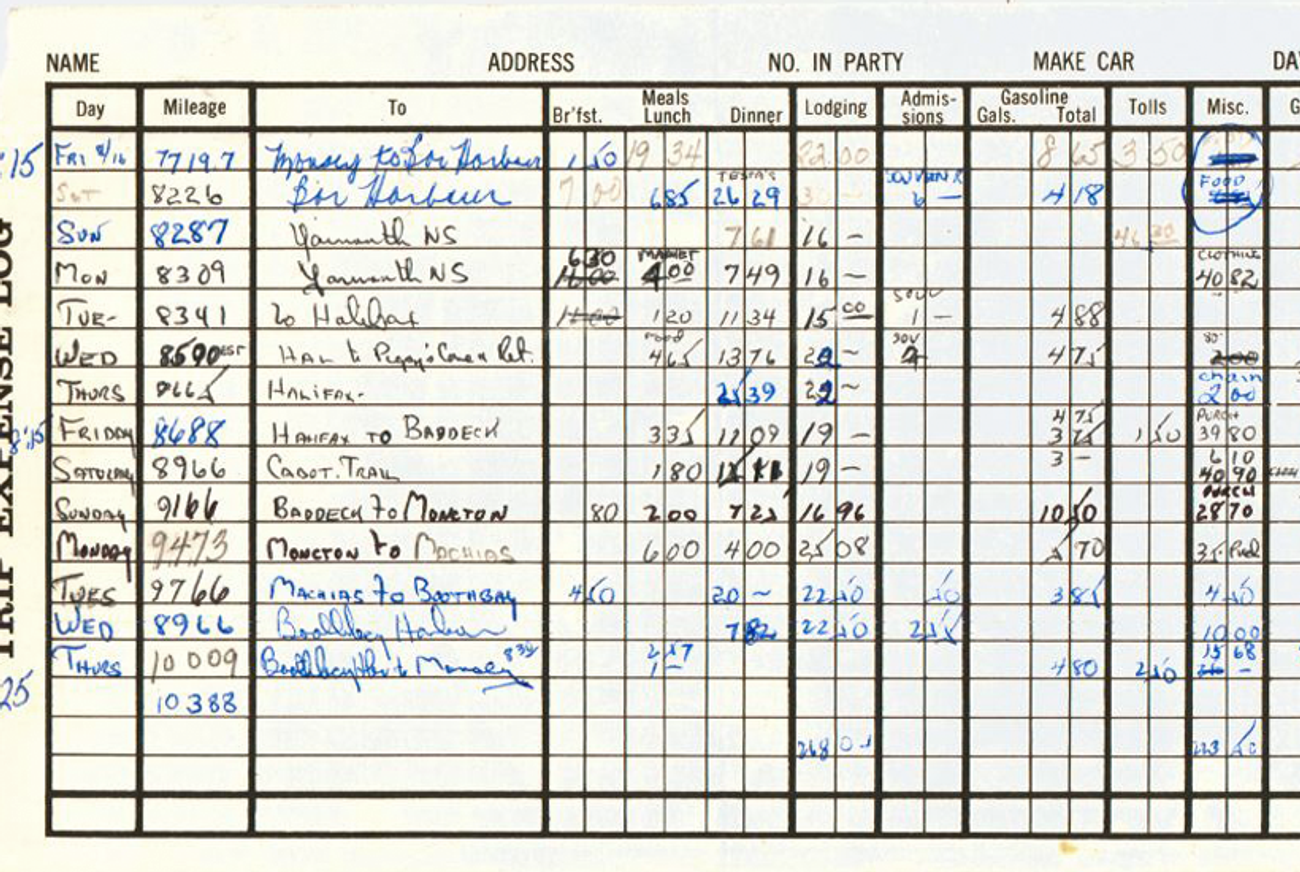As We Count the Days of the Omer, Let’s Make Tithing Count, Too
Lower earners give more to charity than higher earners do. Maybe it’s time we all pitch in equally.




To number our days—teach us, and we will bring a heart of wisdom. (Psalm 90:12)
My father lived a life of heshbon: accounting and accountability. A carefully handwritten expense log of a family road trip to Maine and Nova Scotia in 1968 shows daily entries for mileage, destinations, meals, lodging, venue admissions, and the like, with running totals weaving back and forth between currencies. Dad “numbered our days” to keep us all on track financially.
Characteristic of their generation, my parents wanted to shield their children from the hardships they experienced during the Great Depression and World War II. It wasn’t easy for him to talk about it, but I think my father wanted to build a wall of money around us to protect us from the vicissitudes of life. He believed charity began at home—and, for the most part, he thought it should stay there.
With the greater economic security that many Jews of my generation took for granted, I was mostly oblivious to heshbon until my mid-30s. I volunteered or took lower-paying work for a range of worthy causes, giving away much of my time but very little of my modest income. I didn’t save for the future, and I didn’t understand my father’s financial preoccupations.
It wasn’t until I experienced a painfully rocky resettlement back in New York City after five years in Israel that I realized I needed to develop a different relationship with money. I discovered why “balance” is a central accounting concept—and how the money stories we carry with us from our families, consciously or unconsciously, always affect our bottom line.
According to a recent Gallup poll, less than one-third of American adults track their income and expenditures on a regular itemized basis, as my father did. Yet heshbon represents a discipline practiced across cultures, regardless of the general economy or particular circumstances. Beyond family budgeting, it’s an essential tool for guiding decisions about how much we give to others.
We are moving through the Omer period, when Jews “number our days” through seven weeks from liberation (Passover) to revelation (Shavuot). There are traditional Omer contingencies for how to get back on track if we lose count. Now—not in December, with its last minute-charitable disbursements—is a perfect time to focus on heshbon, and especially on how the spiritual and the financial come together in tzedakah: giving toward justice, or “just-giving.”
There’s a wealth of Torah in the tax returns we put away after April 15. “How America Gives,” a study conducted by The Chronicle of Philanthropy, offers an aggregated approximation by state, county, major city, and ZIP code of the percentage of income donated annually. That percentage is called a giving ratio, and a giving ratio of 10 percent is traditionally known as a tithe. Ancient rabbis derived 10 percent to 20 percent as tithing standards from biblical imperatives set forth in Leviticus and Deuteronomy and upheld in the book of Malachi.
In Malachi’s vision (3:8-10), which also informs Christian advocates of tithing, those who do not adequately share their abundance are robbing God, and God offers a stirring challenge in response. “Bring the entire tithe into the storehouse, that there be food in My house, and so test me in this—says the Eternal One of all forces—if I will not open the gates of heaven and pour upon you blessing without limit.”
Proportions—not absolute numbers—are the primary ethical challenges of just-giving. Percentage increments add up. As noted in the Talmud (Bava Batra 9b), “Just as each small metal scale joins into a great armor-plate, so with tzedakah each and every coin joins into a great heshbon.” The secret of this “great heshbon” is the ability to see all our expenditures in proportion, day by day.
The impact of Malachi’s challenge is reflected in the data. On the state level, the most generous giving ratios belong to Utah, with its Mormon majority, and to the southeastern Bible Belt. In more liberal areas, tithing is often dismissed for its associations with fundamentalism, conservative political agendas, and oligarchies of wealth.
Yet one of the most revelatory aspects of “How America Gives” holds true across the nation: the lower the income, the higher the giving ratio. Even in Utah, donors with incomes up to $25,000 are twice as generous—on a percentage basis—as those with six-figure incomes. (In my New York City ZIP code, donors with incomes up to $25,000 are four times as generous as those who earn six figures.)
A few insular Orthodox neighborhoods buck the national trend, with higher giving ratios that increase as incomes rise. Yet most Jewish discussions of philanthropy still focus on absolute numbers rather than on the “great heshbon” of percentages. Limited internal studies indicate that, on the whole, American Jewish giving ratios are comparable to those of similarly affluent and liberal non-Jews.
In order to identify the most equitable personal giving ratio, we need awareness of our discretionary spending. “What America Buys,” a recent NPR analysis of spending habits, shows a blurring of needs and wants—with no mention of charitable giving. When we can identify both essential and optional expenditures with greater clarity, we are in a better position to determine how much we can really afford to share with those who have less.
After I regained some stability back in the United States from Israel, I began to prowl the personal-finance sections of my favorite second-hand bookstores. Eventually I started to keep regular accounts of my income and expenses and taught myself how to create computer spreadsheets. I started saving for retirement, and I gradually retired my debts. For nearly 15 years I have maintained customized monthly records that show me at a glance how I “number my days.”
As I clarified my spending priorities, I began experimenting with more generous financial support for organizations that work to repair the world as I envision it. My regular practice of heshbon soon became a commitment to tithe according to traditional Jewish standards. My income varies and rarely exceeds the U.S. median, but I have maintained 10 percent as my giving minimum since the beginning of the millennium.
I’ve found that the mention of tithing usually brings otherwise voluble conversations about income inequality to an awkward halt. Thinking in terms of giving ratios seems to make people uncomfortable. In fact, the average American rate of giving has hovered steadily around 2 percent for more than four decades, through bull and bear markets. Yet whatever our social values may be, our financial support is needed to realize them. We may go to the election polls once or twice a year, but we vote with our purchasing power every day—and those votes are what determine the “great heshbon.”
Along with his call for tithing, the prophet Malachi highlights the need “to return the heart of parents to children, and the heart of children to their parents” (4:6). I discovered a common financial language with my father toward the end of his life, and now I seek out the money dialogue within and between generations. By sharing our stories, we can move toward more conscious sharing of the money itself.
It’s crucial to separate questions of how much to give from questions of where to give. Would-be givers are too often paralyzed by charitable-information overload. Yet we contribute to college savings and retirement plans without knowing in advance where the funds will be spent. In the same way, just-giving—simple and fair, with thoughtful adjustments as appropriate—becomes possible when we commit to a regular percentage of income. We can manage tzedakah to put more of our money where our mouths, minds, and hearts are.
Recent decades have given rise to various philanthropic initiatives that promote more equitable percentage giving, with recommended rates of 1 percent, 10 percent, or upwards of 20 percent. All of them recruit by telling stories. But even though proportional giving first entered modern civilization through the Israelite tithe, there has been no organized Jewish presence among these initiatives.
That is slowly changing, with rabbinic and lay leader calls to action. Across North America, a dialogue has begun to connect Jewish elders, boomers, Gen-Xers, millennials, and beyond. This August, Generous Justice will launch a program in partnership with the National Havurah Committee aimed at empowering participants to develop circles for just-giving in their home communities. (Full disclosure: My organization is spearheading this program. Any compensation I receive beyond labors of love is tithed.)
Meanwhile, the season of counting the Omer remains a pivotal time to reach through the silences that usually deflect these concerns. Inspired by so many who earn less and give more, we can face the value choices that confront us every time we open our wallets. We can move together through the money-wilderness of experiences, emotions, beliefs, and behaviors toward the revelation of “a heart of wisdom.”
If we lose count temporarily, we can always get back on track from wherever we are, with whatever we have—and keep matters in proportion.
Rabbi Regina Sandler-Phillips is the director of WAYS OF PEACE Community Resources in Brooklyn, N.Y.